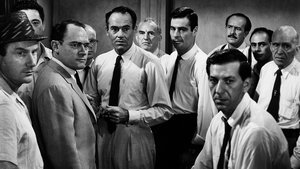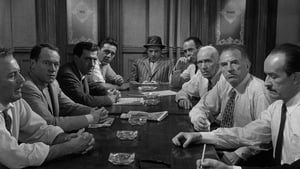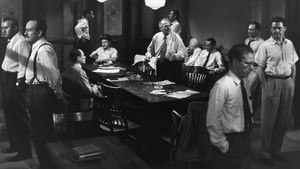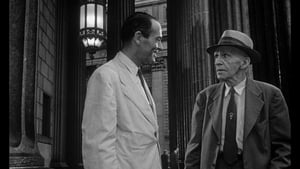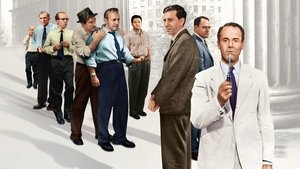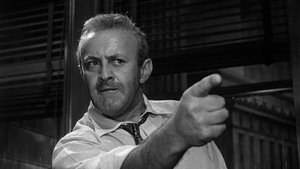Contact: [email protected]
Video Sources 0 Views
- 12 Angry Men Colorized

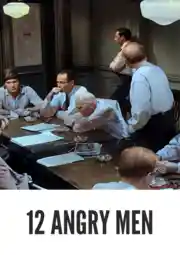
12 Angry Men Colorized 1960: The Best of Colorization on a Classic Drama
Synopsis




Introduction
The hallowed halls of classic cinema echo with the resonating dialogues and intense courtroom drama of “12 Angry Men.” As a timeless piece of storytelling, this black-and-white masterpiece has left an indelible mark on the cinematic landscape. However, the debate over colorizing such classics has ignited discussions about preserving the past while ushering it into the future. In this exploration, we embark on a journey through the riveting narrative of “12 Angry Men” and the controversial yet intriguing world of colorization.
Read Media File Transfer Agreement: Terms and Conditions
Read FAQ
12 Angry Men Colorized: A Brief Overview
“12 Angry Men Colorized,” directed by Sidney Lumet and released in 1957, unfolds in a claustrophobic jury room where twelve jurors deliberate the guilt or innocence of a young defendant accused of murder. The film, hailed for its gripping storytelling and stellar ensemble cast, is a hallmark of American cinema. In revisiting this classic through the lens of colorization, we delve into the nuances of a controversial but compelling cinematic experiment.
Significance of Revitalizing Old Movies Through Colorization
The act of colorizing old movies is not merely a technical process; it is a deliberate attempt to infuse vitality into cinematic treasures, making them more accessible to contemporary audiences. As we examine the colorized version of “12 Angry Men Colorized,” we unravel the layers of significance that underlie the decision to bring this black-and-white gem into the vibrant spectrum of color.
The Evolution of “12 Angry Men Colorized” Through Colorization
The Colorization Process: Breathing New Life
Colorization is not a one-size-fits-all process; it requires a delicate touch and a nuanced understanding of the film’s original aesthetics. In the case of “12 Angry Men,” the colorization process involves a meticulous approach to preserve the film’s integrity while enhancing its visual appeal. From the careful selection of color palettes to the nuanced application of hues, every step is a dance between the old and the new.
Artistic Decisions: Crafting a Color Palette
Colorizing a film involves a series of artistic decisions, from determining the appropriate color palette for the setting to capturing the nuances of actors’ expressions. The challenge lies in retaining the emotional impact of the original while introducing a fresh visual perspective. Understanding the artistic decisions made during the colorization of “12 Angry Men” unravels the intricacies of balancing homage with innovation.
Pros and Cons of Colorizing Classic Films like “12 Angry Men”
The Colorization Debate: An Ongoing Dialogue
The debate surrounding colorization is as old as the practice itself. Advocates argue that colorization breathes new life into classics, making them more appealing to modern audiences. Detractors, on the other hand, emphasize the risk of diluting the artistic intent of the original work. Delving into the pros and cons of colorization, especially concerning a seminal film like “12 Angry Men Colorized,” exposes the polarizing perspectives that shape this ongoing dialogue.
Preserving Original Artistic Intent: A Delicate Balance
Preserving the original artistic intent of a film is at the heart of the colorization debate. As we explore the arguments against colorizing classics, we encounter concerns about the potential loss of subtleties, the dilution of the director’s vision, and the erosion of historical authenticity. “12 Angry Men Colorized” becomes a poignant case study in understanding how to navigate the fine line between modernization and the preservation of cinematic heritage.
The Impact of Color on Narrative: A Case Study of “12 Angry Men Colorized”
Comparative Analysis: Black-and-White vs. Colorized Versions
The impact of colorization on narrative nuances is a central focus when examining the colorized version of “12 Angry Men Colorized.” By conducting a comparative analysis between the original black-and-white film and its colorized counterpart, we unearth the visual and thematic differences that emerge. This exploration offers insights into how the addition of color can reshape the emotional landscape of a cinematic masterpiece.
Unraveling Visual and Thematic Nuances
Color, as a visual element, has the power to evoke emotions and emphasize themes. In the case of “12 Angry Men Colorized,” the transformation from black and white to color invites a fresh perspective on the juror dynamics, the tension in the room, and the nuances of character expressions. The narrative acquires a new layer of complexity, blurring the lines between the objective and the subjective.
Reviving a Masterpiece: The Art and Science of Color Restoration
Technological Advancements: Precision in Color Restoration
The evolution of color restoration techniques marks a significant stride in the quest to balance modernization with authenticity. Technological advancements, from early hand-coloring methods to contemporary digital precision, have revolutionized the science of colorizing films. Understanding the intricate processes involved in color restoration sheds light on the commitment to preserving the essence of cinematic classics.
Challenges in Color Restoring Old Films: A Technical Tightrope
While technology has propelled colorization into new realms of accuracy, challenges persist in maintaining the integrity of the original work. The quest for perfection often encounters technical hurdles, requiring a delicate balance between enhancing visual appeal and staying true to the director’s vision. The journey of color restoration becomes a testament to the dedication of those who seek to revive the past without overshadowing its inherent charm.
Preserving Cinematic Integrity: Balancing Modernization with Authenticity
Challenges in Color Restoring Old Films
Preserving the cinematic integrity of old films through colorization is a nuanced task that demands a keen understanding of the film’s historical and artistic context. As we navigate the challenges faced by restorers, we gain insights into the delicate balancing act required to harmonize modernization with authenticity. The colorization of “12 Angry Men Colorized” becomes a prism through which we examine the preservation of cinematic treasures.
The Dilemma of Altering Artistic Choices
Colorizing a classic film like “12 Angry Men” involves confronting the dilemma of altering artistic choices made by the original filmmakers. The challenge lies in maintaining a delicate equilibrium: enhancing the film’s visual appeal without eclipsing the intent behind the original aesthetic decisions. The colorization of “12 Angry Men Colorized” beckons us to reflect on the responsibility of custodianship in the cinematic realm.
The Enduring Legacy of “12 Angry Men” in Any Hue
American Judicial System in Film: Timeless Relevance
Beyond its visual presentation, “12 Angry Men” remains a timeless exploration of the American judicial system. The film’s enduring legacy extends beyond the black-and-white era, resonating with audiences irrespective of its hue. As we reflect on the film’s portrayal of justice, morality, and human nature, we recognize the enduring relevance that transcends the colorization debate.
Impact of Colorization: A New Lens on a Timeless Tale
The colorized version of “12 Angry Men” becomes a lens through which audiences can revisit and rediscover the film’s thematic richness. While purists may hesitate, arguing that the original black-and-white presentation holds a unique charm, others embrace the colorized rendition as a gateway to a renewed cinematic experience. The enduring legacy of “12 Angry Men” takes on a new hue, inviting a diverse audience to engage with its timeless narrative.
In Conclusion
As we navigate the intricate web of colorization and its impact on a cinematic gem like “12 Angry Men,” a multifaceted narrative unfolds. The evolution of colorization techniques, the pros and cons of revitalizing classics, and the delicate balance between modernization and authenticity all converge in the realm of preserving cinematic heritage.
“12 Angry Men Colorized” becomes more than just a controversial experiment; it is a mirror reflecting the complexities of our evolving relationship with classic cinema. In the end, whether experienced in the stark elegance of black and white or the vivid hues of color, “12 Angry Men” stands as a testament to the enduring power of storytelling—one that transcends the color palette and continues to resonate with audiences across generations.
